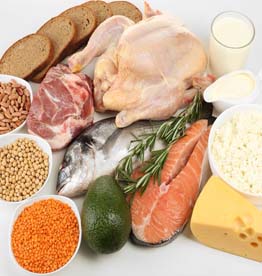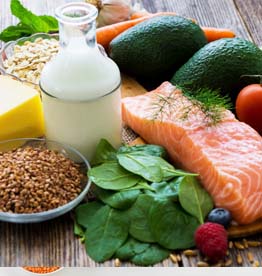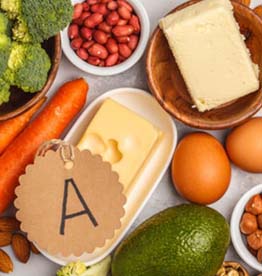The Healthy Diet For Mycetoma Patients

Mycetoma is a chronic, neglected tropical disease caused by certain types of bacteria and fungi found in soil and water. These organisms may enter the body through a break in the skin, often on a person’s foot. It appears clinically as a small painless subcutaneous mass that grows slowly, and then multiple oozing sores discharging purulent fluid-containing grains develop. It spreads to affect the skin, deep structures and bone leading to massive tissue destruction, deformities and disability. The disease treatment duration is long and has many side effects hence, nutrition support is mandatory.
Several nutrients play important roles in mycetoma wound healing and response to treatment. The following is a summary of these nutrients:
Protein
 Protein is essential for the maintenance and repair of body tissue. Low protein levels will cause a decrease in collagen development, slowing the wound-healing process. Adequate protein levels will help achieve optimal wound healing rates. Overall energy intake is also important because if energy needs aren’t met, the body will use protein for energy rather than for wound healing. Protein sources include red and white meats, fish, eggs, liver, dairy products; milk, cheese, yoghurt, soybeans, legumes, nuts and seeds.
Protein is essential for the maintenance and repair of body tissue. Low protein levels will cause a decrease in collagen development, slowing the wound-healing process. Adequate protein levels will help achieve optimal wound healing rates. Overall energy intake is also important because if energy needs aren’t met, the body will use protein for energy rather than for wound healing. Protein sources include red and white meats, fish, eggs, liver, dairy products; milk, cheese, yoghurt, soybeans, legumes, nuts and seeds.
L-Arginine is an amino acid that enhances some of the pathways involved in wound healing, such as structural protein synthesis. The demand for normally non-essential amino acids, such as L-arginine, becomes conditionally essential as the body needs more protein during wound healing. Dietary supplementation with arginine has been shown to enhance protein metabolism, helping to reduce muscle loss and collagen synthesis, which then helps increase the wound›s strength. This is why arginine-containing nutritional supplements, such as Arginaid, may be useful.
Energy
 The main energy sources for the human body and wound healing are carbohydrates and fats. Energy is essential for wound collagen synthesis. Energy needs for wound healing increase according to its size and complexity.
The main energy sources for the human body and wound healing are carbohydrates and fats. Energy is essential for wound collagen synthesis. Energy needs for wound healing increase according to its size and complexity.
Fats, including mono – and polyunsaturated fats, provide vital fuel for wound healing. Fats are a safe and concentrated source of energy. Adequate fats are needed to prevent the body from using protein for energy. Fatty acids are a major component of cell membranes, and demands for essential fatty acids increase after injury. Good fat sources to promote wound healing include meat, full-fat dairy products such as milk, cheese, butter, cream, yoghurt, ice cream, and oils and fats used in cooking or as spreads. It is important to aim for weight maintenance during wound healing. An overweight person should not try to lose weight until their wound has completely healed. An underweight person should try to put on enough weight to reach the normal range.
Vitamin C
 Vitamin C plays an important role in collagen synthesis, subsequent cross-linking, and the formation of new blood vessels (angiogenesis). Adequate Vitamin C levels will help strengthen the healing wound. Vitamin C deficiency has been found to impair wound healing and is associated with an increased risk of wound infection. Research has shown vitamin C supplementation helps promote pressure ulcer healing. It is found mostly in fruit and vegetables, especially oranges, grapefruit, tomatoes, and leafy vegetables. Fruit juices with added vitamin C are also a good source, although often they contain only small amounts of vitamin C.
Vitamin C plays an important role in collagen synthesis, subsequent cross-linking, and the formation of new blood vessels (angiogenesis). Adequate Vitamin C levels will help strengthen the healing wound. Vitamin C deficiency has been found to impair wound healing and is associated with an increased risk of wound infection. Research has shown vitamin C supplementation helps promote pressure ulcer healing. It is found mostly in fruit and vegetables, especially oranges, grapefruit, tomatoes, and leafy vegetables. Fruit juices with added vitamin C are also a good source, although often they contain only small amounts of vitamin C.
Vitamin A
 Vitamin A increases the inflammatory response in wounds, stimulating collagen synthesis. Low vitamin A levels can result in delayed wound healing and susceptibility to infection. Serious stress or injury can cause an increase in vitamin A requirements. While the mechanisms of vitamin A in wound healing are still not well understood, it is clear that it plays an important role. Supplementation with vitamin A requires caution, as there is a risk of toxicity. Vitamin A is found in milk, cheese, eggs, fish, dark green vegetables, oranges, red fruits and vegetables.
Vitamin A increases the inflammatory response in wounds, stimulating collagen synthesis. Low vitamin A levels can result in delayed wound healing and susceptibility to infection. Serious stress or injury can cause an increase in vitamin A requirements. While the mechanisms of vitamin A in wound healing are still not well understood, it is clear that it plays an important role. Supplementation with vitamin A requires caution, as there is a risk of toxicity. Vitamin A is found in milk, cheese, eggs, fish, dark green vegetables, oranges, red fruits and vegetables.
